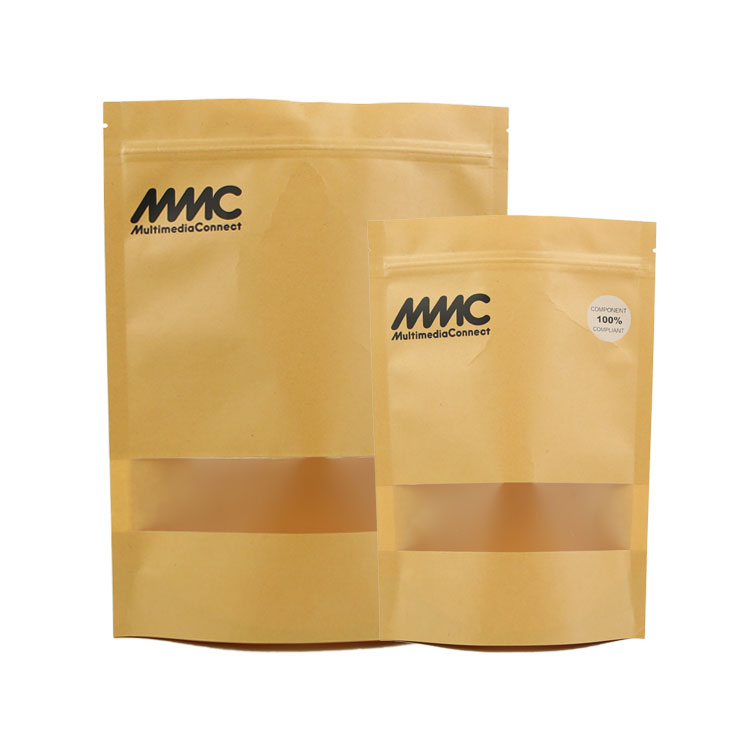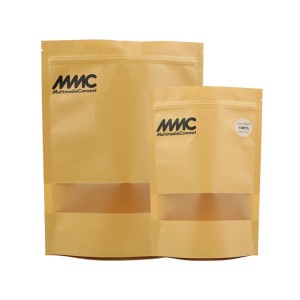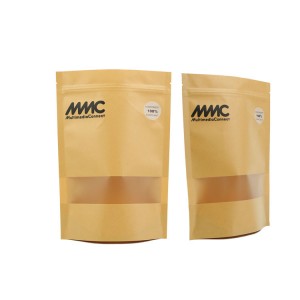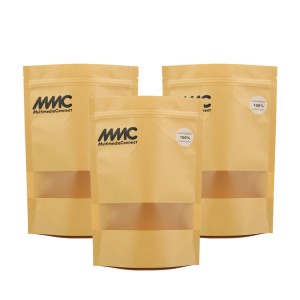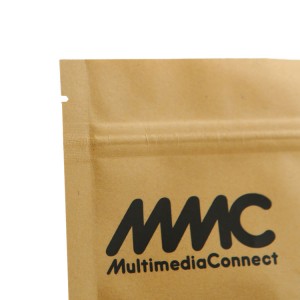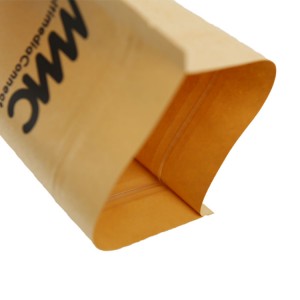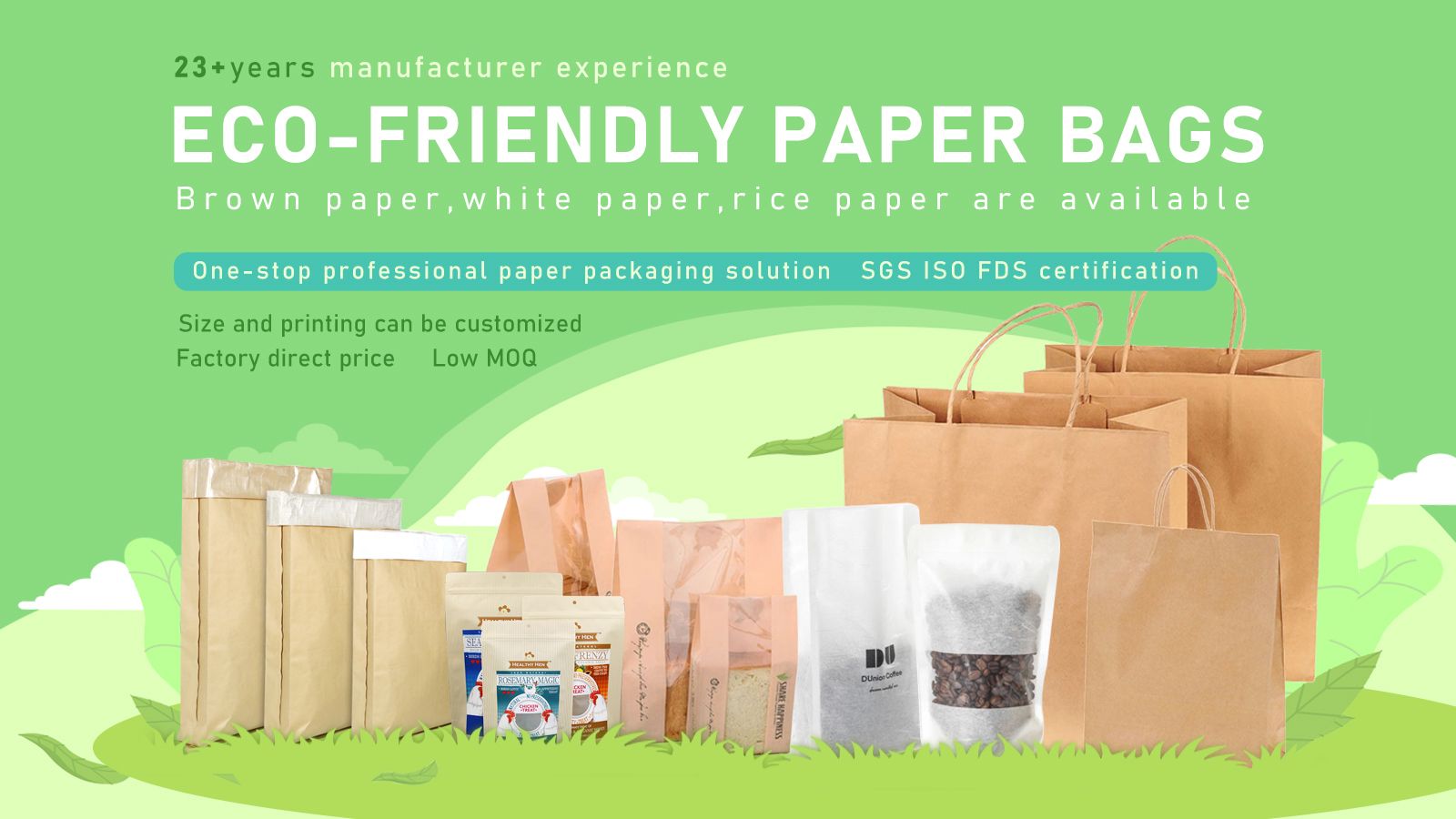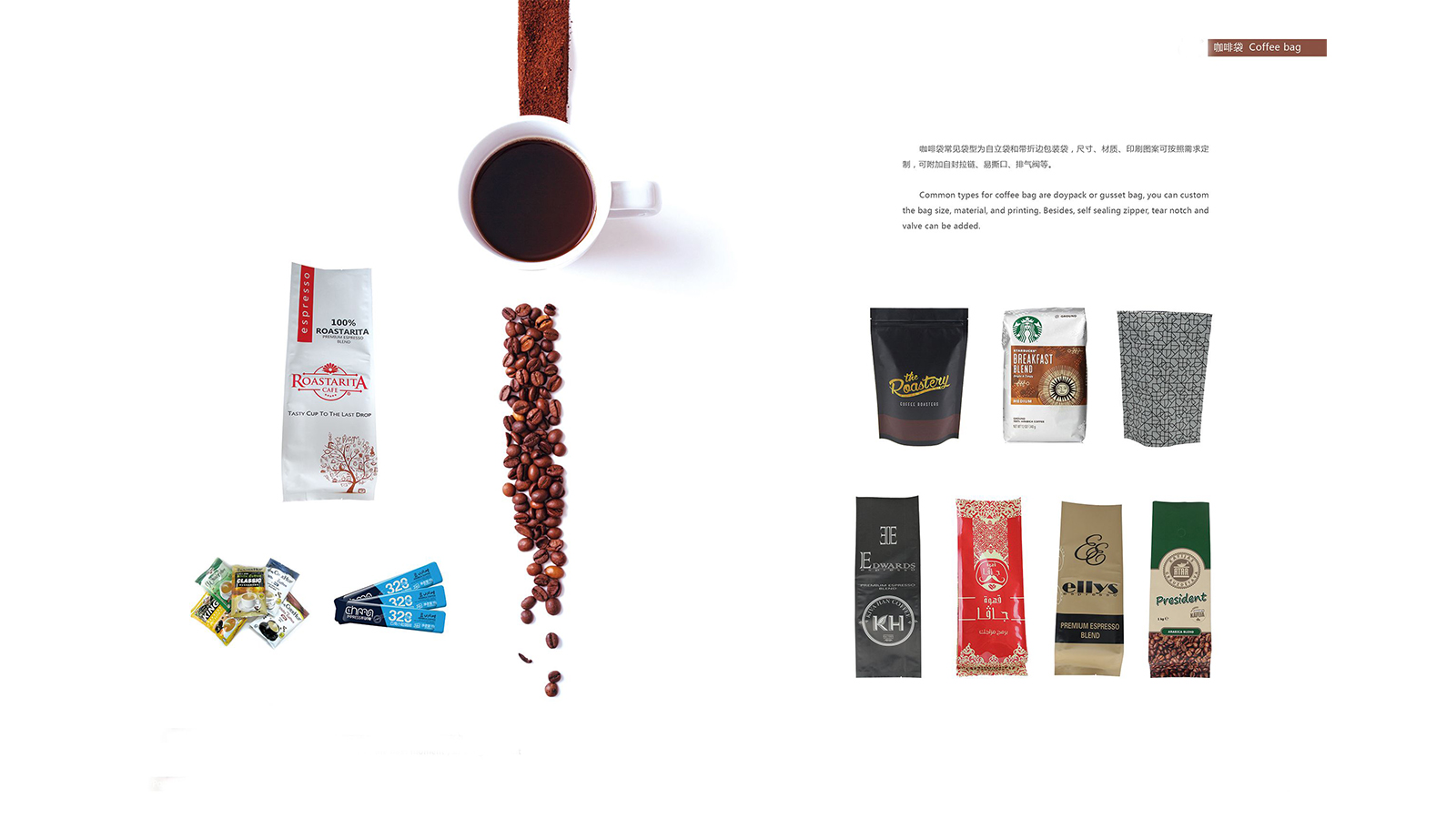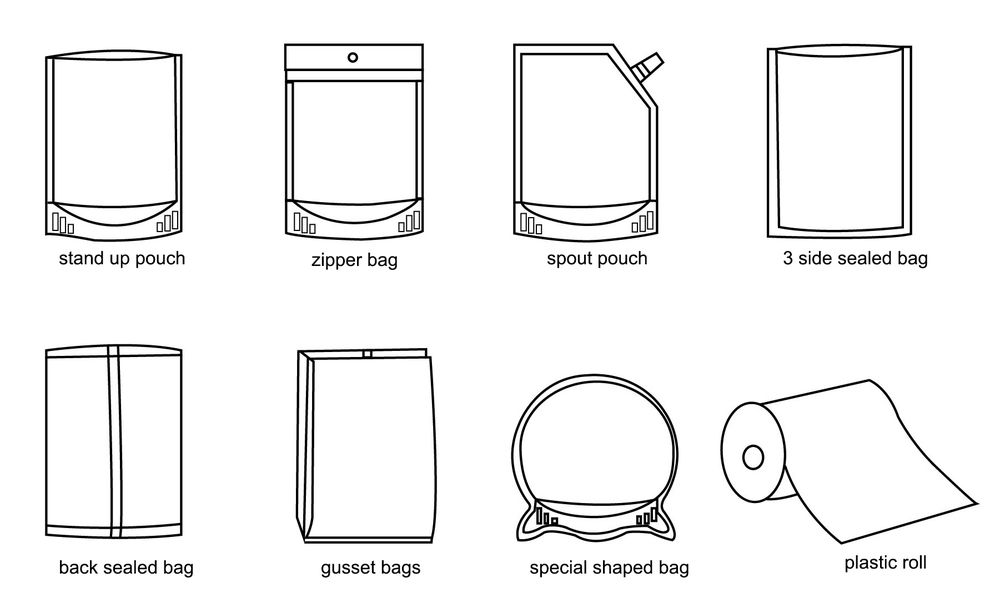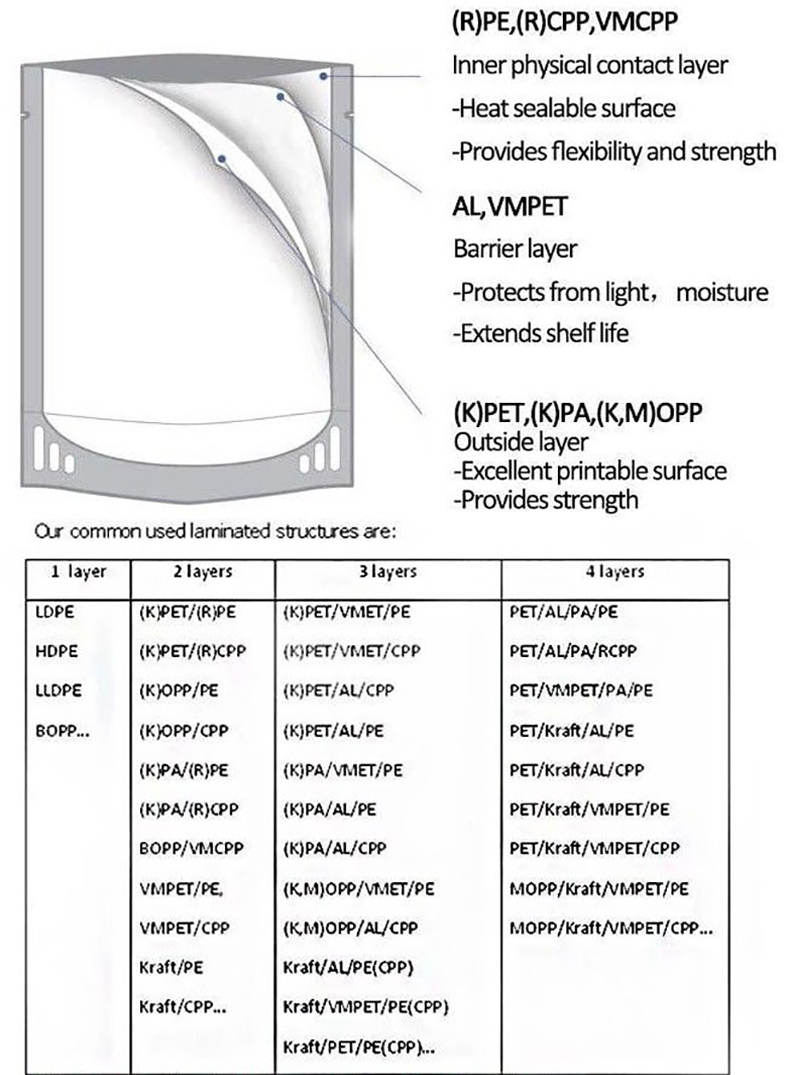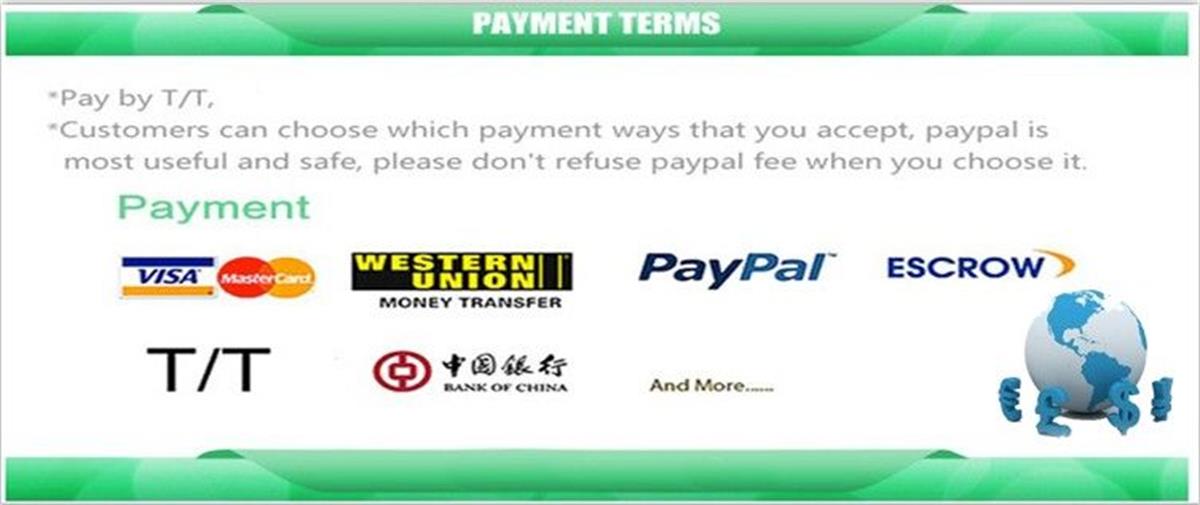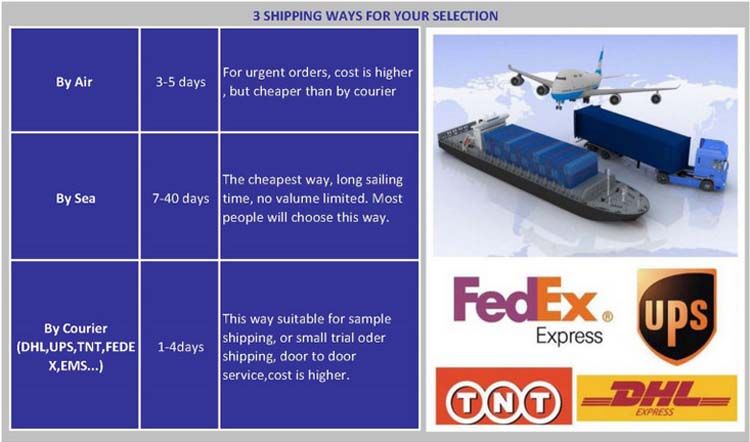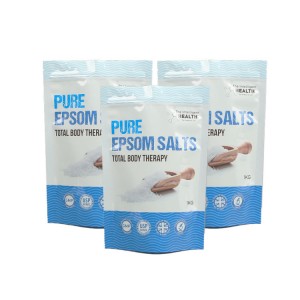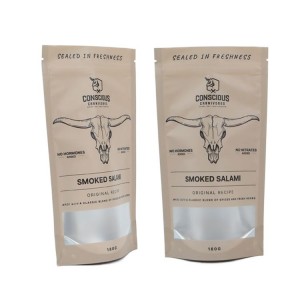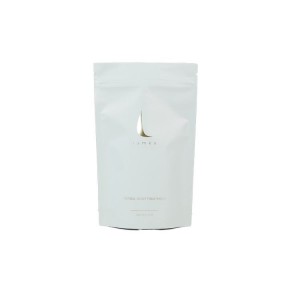
Products
Kraft Paper Bag With Zipper Clear Window Paper Packaging Bag
Material: Kraft paper bags are typically made from unbleached Kraft paper, which gives them a brown, natural appearance. The paper is known for its strength and sturdiness.
Eco-Friendly: Kraft paper is biodegradable and recyclable, making Kraft paper bags an eco-friendly choice compared to plastic bags. They are often favored by businesses and consumers seeking more sustainable packaging options.
Types: Kraft paper bags come in various sizes and styles to accommodate different needs. Common types include standard flat-bottom paper bags, gusseted bags (with expandable sides), and lunch bags.
Handles: Some Kraft paper bags have built-in handles for easy carrying. These handles can be made of paper or, in some cases, reinforced with cord or ribbon for added strength.
Customization: Many businesses choose to customize Kraft paper bags with their logos, branding, or artwork. This personalization helps promote the brand and makes the bags more appealing to customers.
Retail and Food Packaging: Kraft paper bags are widely used in retail stores for packaging clothing, shoes, books, and other products. They are also popular in the food industry for carrying takeout meals, snacks, and bakery items.
Strength: Kraft paper bags are known for their durability and resistance to tearing. They can hold a variety of items without easily breaking, which makes them suitable for heavier products.
Cost-Effective: Kraft paper bags are often cost-effective, making them a budget-friendly option for businesses.
DIY and Craft Projects: Kraft paper bags are not limited to commercial use. They are also popular for DIY and craft projects, including gift wrapping, scrapbooking, and other creative endeavors.
Biodegradability: One of the significant advantages of Kraft paper bags is their ability to decompose naturally, reducing environmental impact when compared to non-biodegradable plastic bags.
Food-Grade Options: For food packaging, it's essential to use food-grade Kraft paper bags, which are designed to meet safety and hygiene standards.

